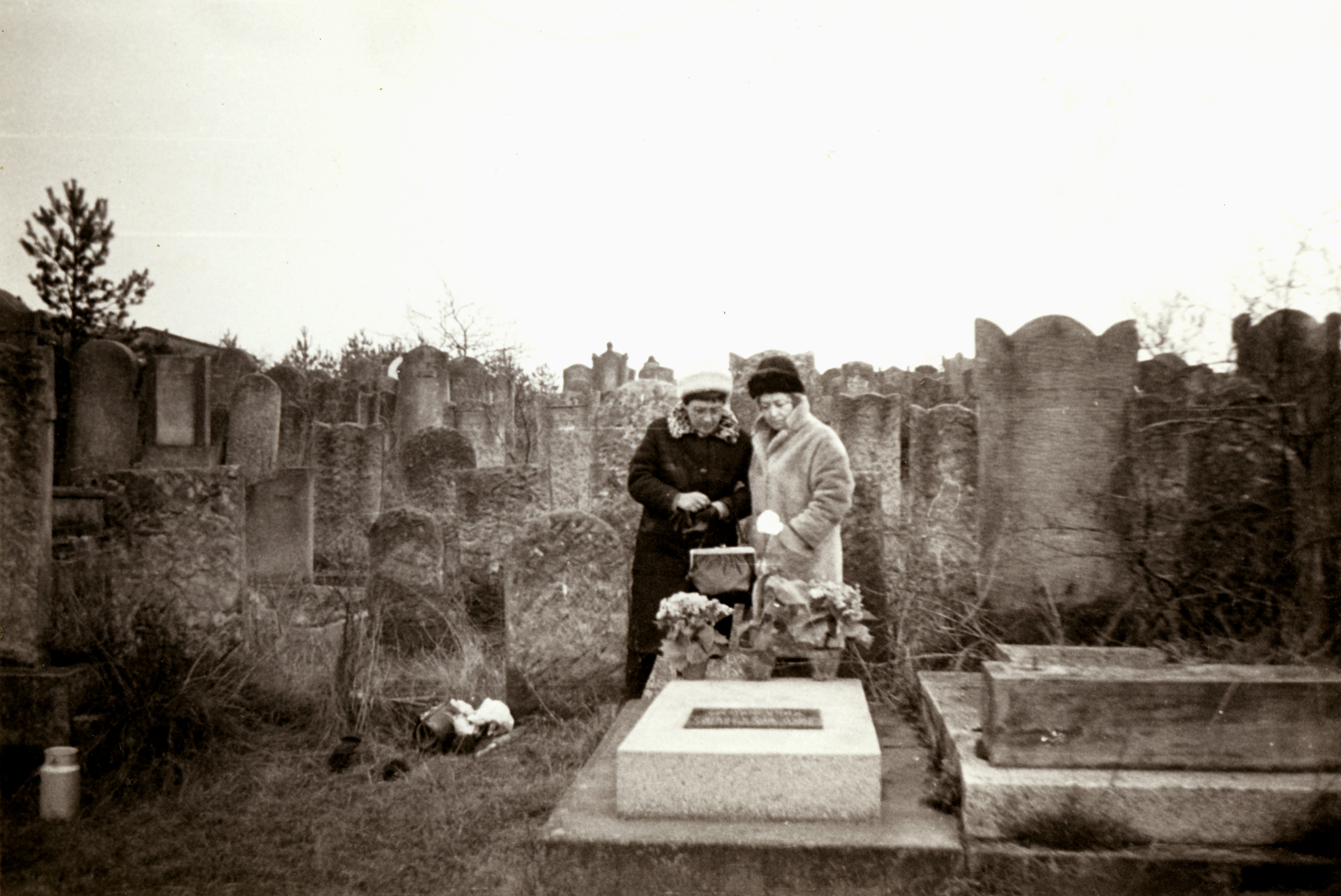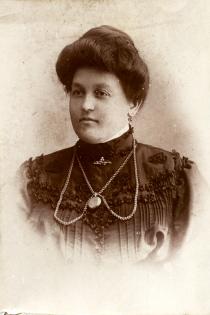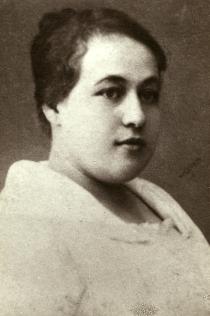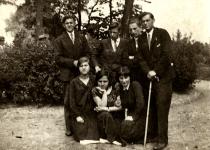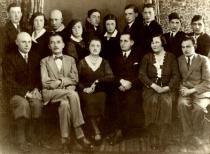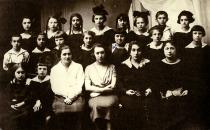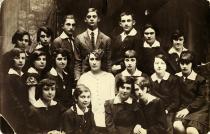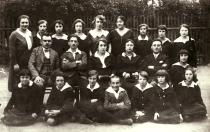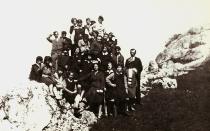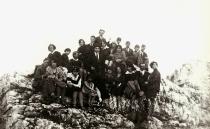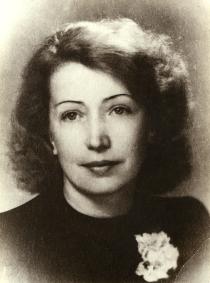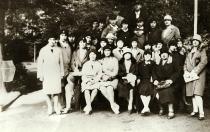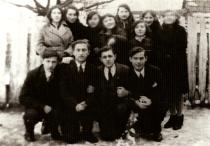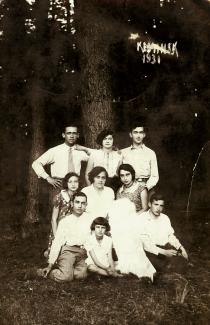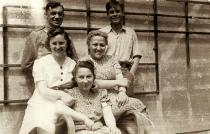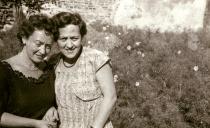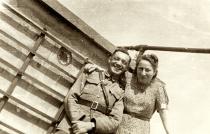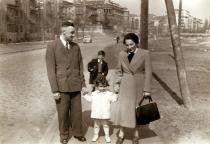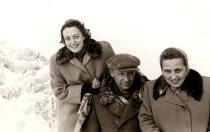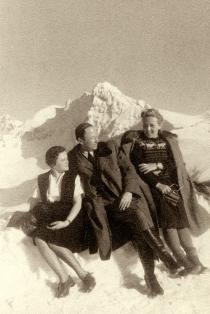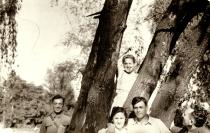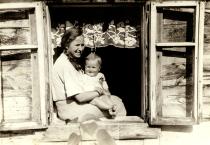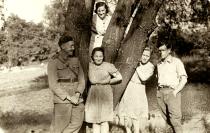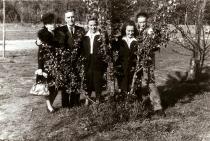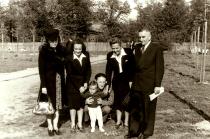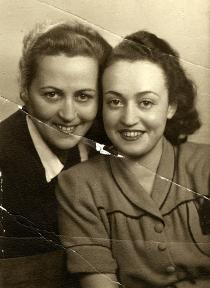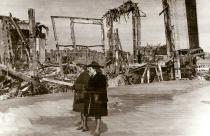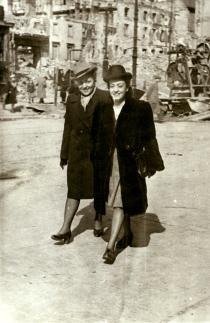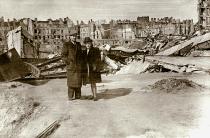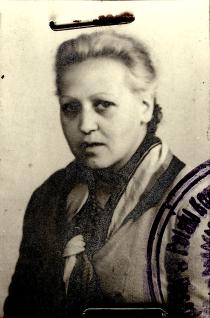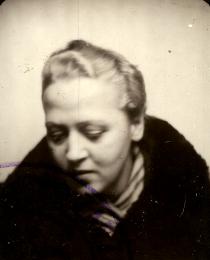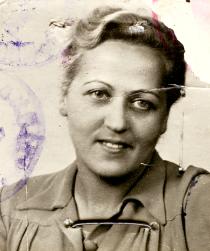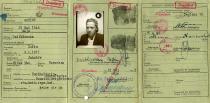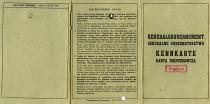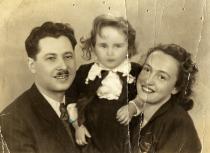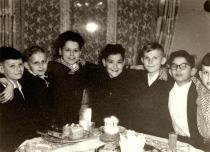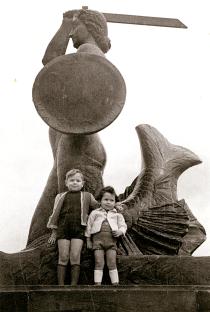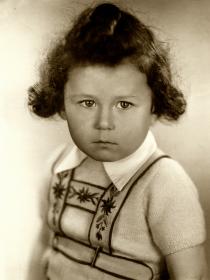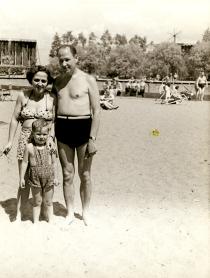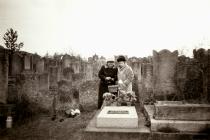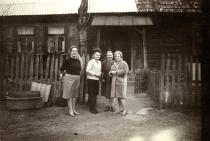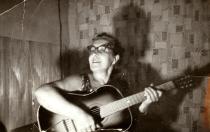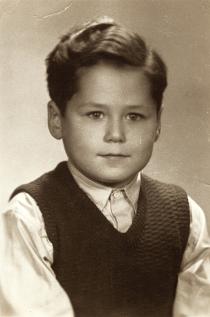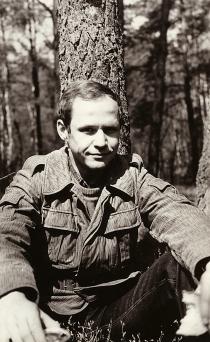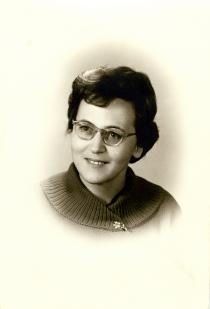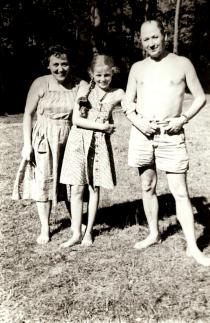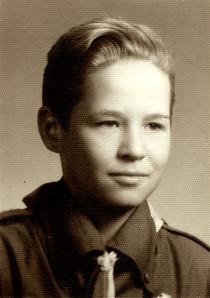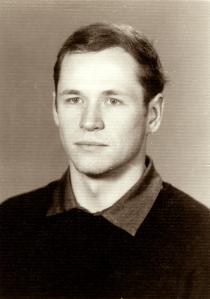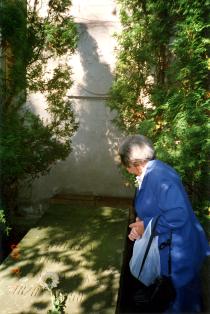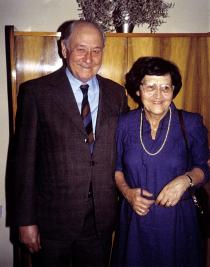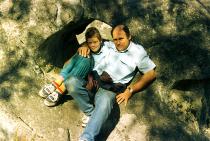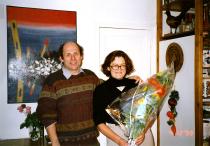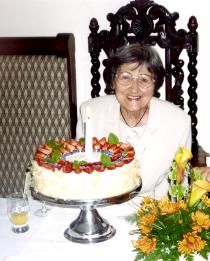It's my sister and me in the Jewish cemetery in Radomsko in the 1950s. This is our parents? tomb.
In 1939 I went on leave for the first time, to a summer resort, for two weeks. To Zielona near Jaremcze. Areas that are now part of Russia. On my way back to Warsaw I dropped in on my mother and sister who were on vacation in Kamiensk near Radomsko. I said farewell to my parents and returned to Warsaw. I saw my parents for the last time.
In September 1939, the Germans entered Radomsko. And on 13th April 1940, my mother died. She had angina pectoris.The Wehrmacht soldiers commandeered brass door knobs for cannonballs. My mother saw those Germans and fainted. And they never roused her back. They didn't tell me, but I had a bad feeling: why has my mother not written to me...
I arrived in the town, took a droshky to the house, no one goes out to the balcony. Well, something's wrong. And at this point my sister and the others run out of the house, all in tears. 'What's up with Mama?' 'She's dead.' She had already been buried. With Jews the dead are buried immediately. My mother is buried at the Jewish cemetery. My sister and I put up a gravestone after the war, not knowing anything about our father, how he died. I think he went with one of the transports, so he rests there symbolically with our mother's ashes. 13th of April is the anniversary of our mother's death, a date we have always remembered.
I don?t know, how and when my father died. But I suppose, it was in the time of the liquidation of the ghetto in Radomsko. In the 1940s. It is a real tomb of my mother, and a symbolic tomb of my father. And the family of our pre-war servant, Janina Koper, take care of this tomb.
